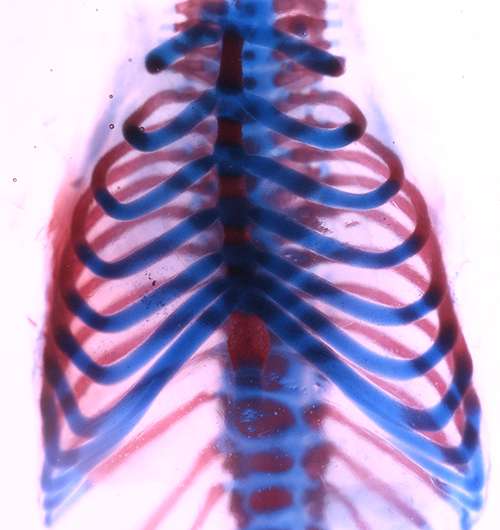Researchers discover the healing power of 'rib-tickling'

Unlike salamanders, mammals can't regenerate lost limbs, but they can repair large sections of their ribs.
In a new study in the Journal of Bone and Mineral Research, a team directed by USC Stem Cell researcher Francesca Mariani takes a closer look at rib regeneration in both humans and mice.
The first author of the paper, USC medical student Marissa K. Srour, was a USC undergraduate when she started the project, which earned a 2011 USC Discovery Scholar Prize. Each year, 10 graduating seniors win these coveted prizes, which recognize exceptional new scholarship.
Using CT imaging, Srour, Mariani and their colleague Janice Lee from the University of California, San Francisco, monitored the healing of a human rib that had been partially removed by a surgeon. The eight centimeters of missing bone and one centimeter of missing cartilage did partially repair after six months.
To better understand this repair process, they surgically removed sections of rib cartilage—ranging from three to five millimeters—from a related mammal, mice. When they removed both rib cartilage and its surrounding sheath of tissue—called the "perichondrium," the missing sections failed to repair even after nine months. However, when they removed rib cartilage but left its perichondrium, the missing sections entirely repaired within one to two months.
They also found that a perichondrium retains the ability to produce cartilage even when disconnected from the rib and displaced into nearby muscle tissue—further suggesting that the perichondrium contains progenitor or stem cells.
"We believe that the development of this model in the mouse is important for making progress in the field of skeletal repair, where an acute clinical need is present for ameliorating skeletal injury, chronic osteoarthritis and the severe problems associated with reconstructive surgery," said Mariani, assistant professor of Cell and Neurobiology and principal investigator in the Eli and Edythe Broad Center for Regenerative Medicine and Stem Cell Research at USC. "At the early stages in our understanding, the mouse provides us with an exceptional ability to make progress, and we are excited about the potential for using cells derived from the rib perichondrium or using rib perichondrium-like cells for regenerative therapy."
More information: Journal of Bone and Mineral Research, www.ncbi.nlm.nih.gov/pubmed/25142306

















